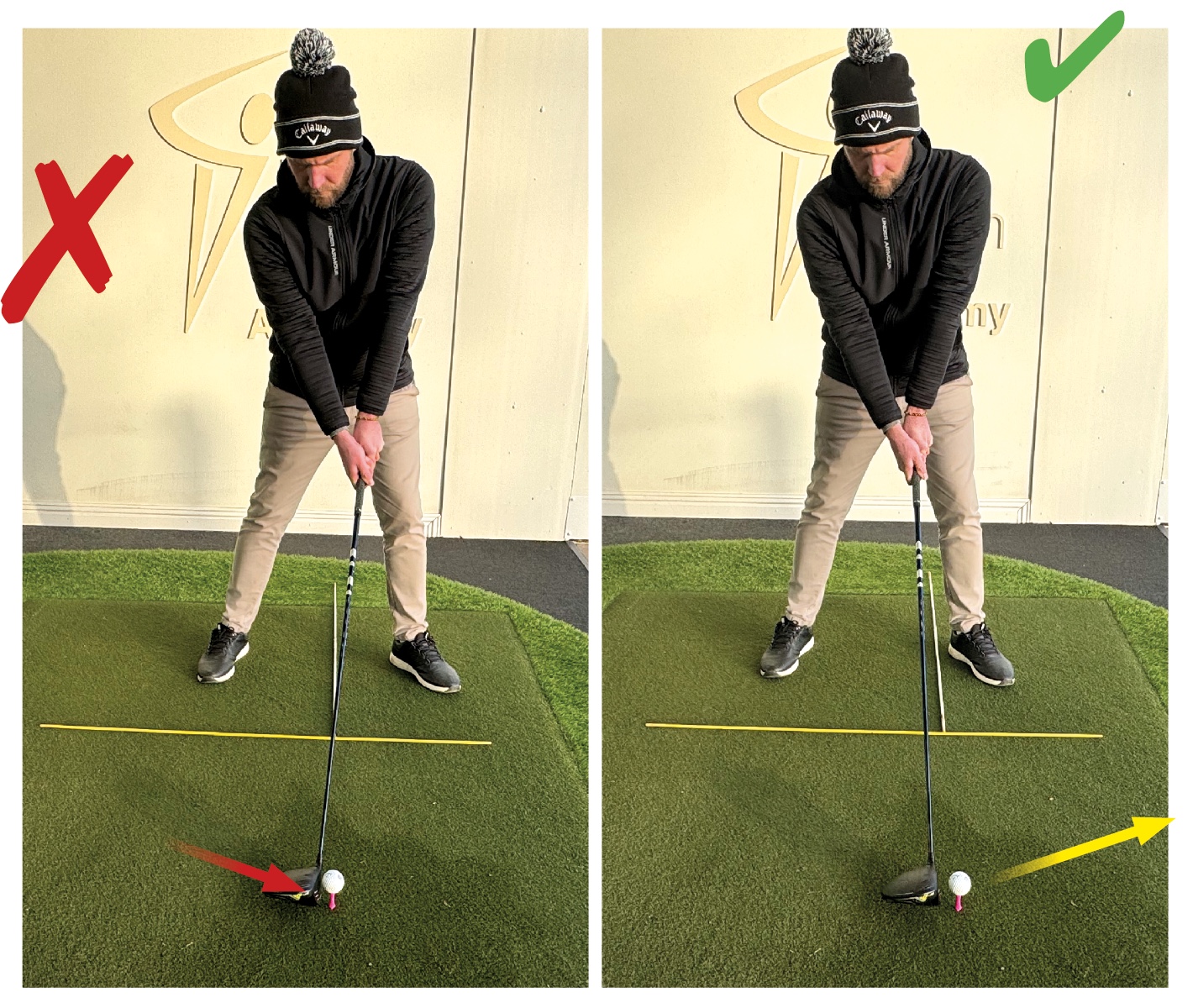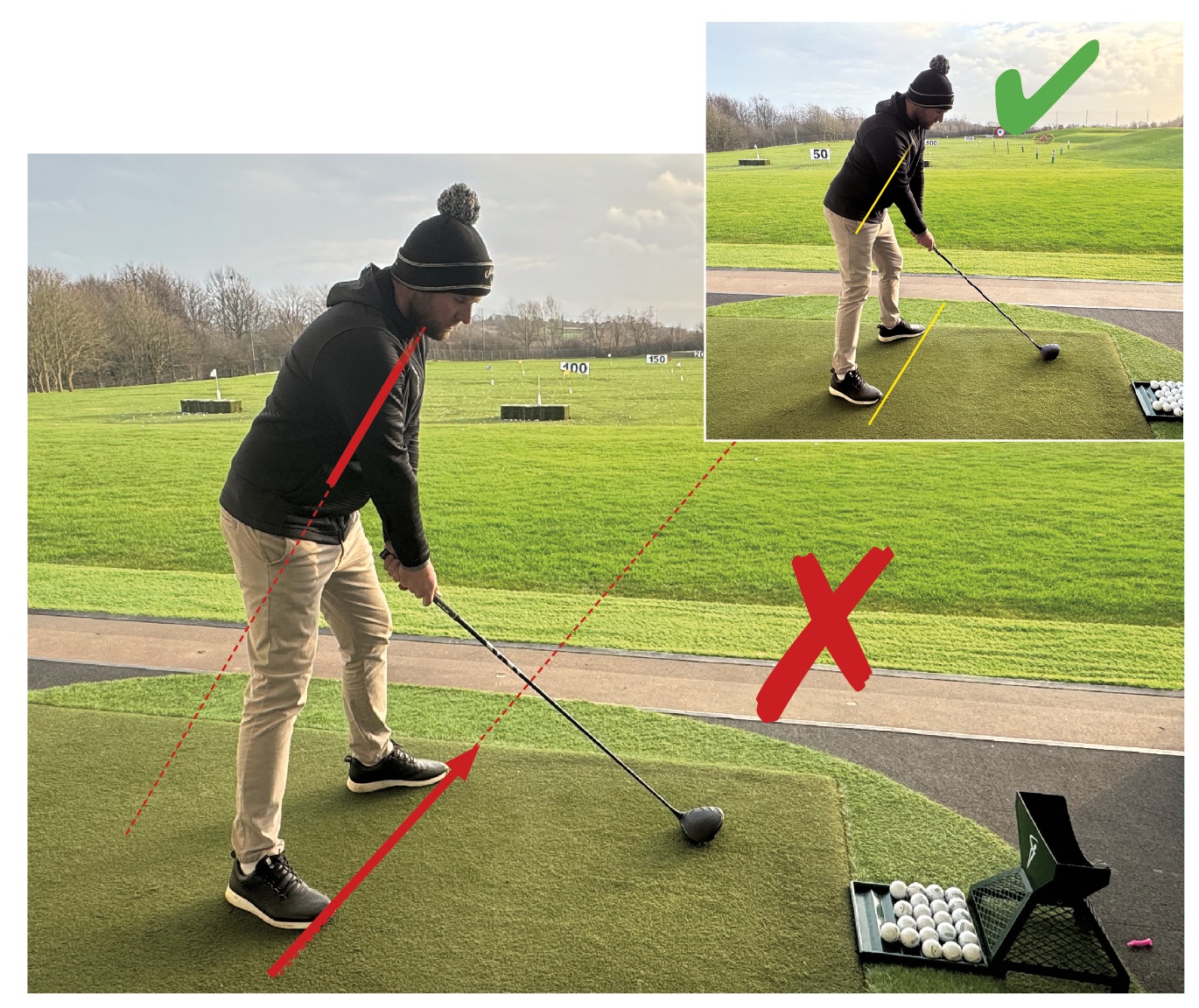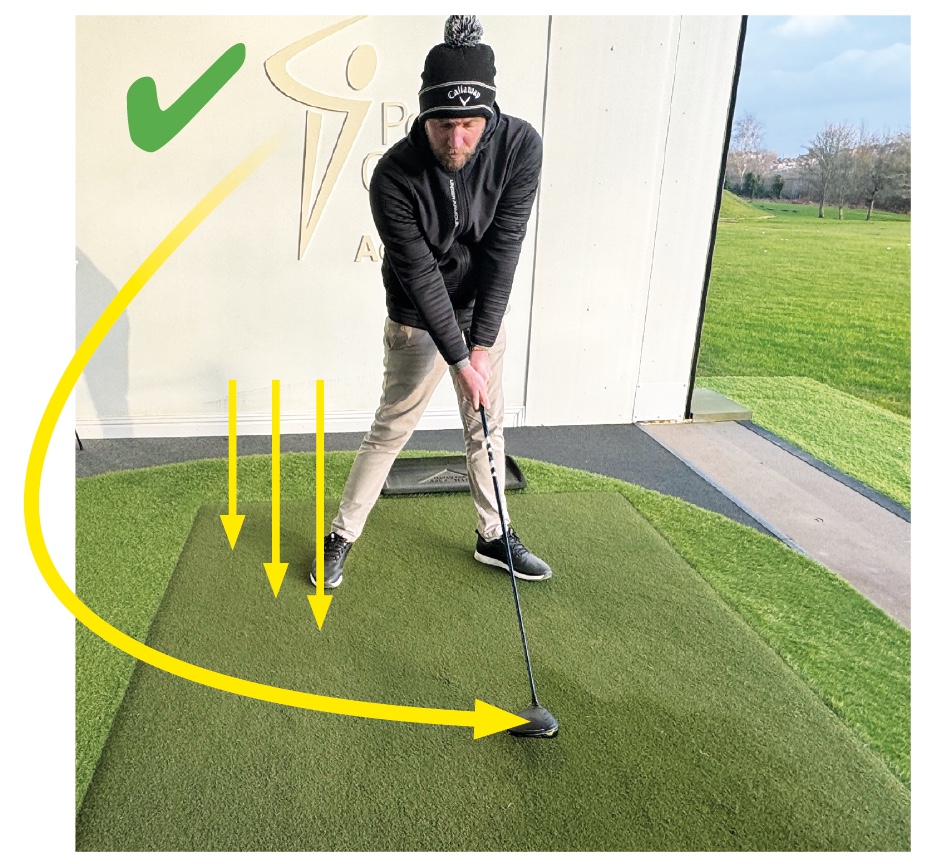By Nick Huby, Head of Instruction at Pete Cowen Academy & Alex Gallemore, Worldwide Golf
For 20 years I’ve known Alex from Worldwide Golf and he’s worked close with Pete and myself on many projects, but his game has suffered recently due to the obsession of wanting a faster swing speed to gain more distance. He understands the swing and mechanics but sometimes you can’t see the wood for the trees. So, I invited him down to the Pete Cowen Academy in Rotherham to show how I could make him drive the ball better and even further with a much slower and more controlled swing.
We both work in close contact with some of the best golfers in the world and it’s easy to lose touch with reality and think a 115mph swing speed is average. Though we need to quickly remember these are the elite golfing ‘aliens’ with pure talent that also spend hours a day working on speed drills to make it all look so effortless.
Taking that into consideration you can’t expect to jump out of the car from the office, loosen up with a couple of mishits on the range and proceed to unleash a rocket off the first tee with tour level speed.
What we need to do is understand how to optimise what you have and that can result in swinging slower to synchronise the movements to improve the strike, while matching the launch and spin.
High launch and low spin are not always the perfect match if you don’t have the speed keep the ball in the air. Spin is your friend, you just need to find that perfect balance.
Alex’s average swing speed is just over 105mph but his strike pattern is inconsistent although sometimes he can even knock it close to 290 yards. The problem is he can also hit it low on the face towards the heel and struggle to carry 230 yards, with his spin easily topping more than 3,500 rpm.
Within 40 minutes I managed to get Alex averaging 275 yards and spinning it consistently around 2,300 RPM with a much slower swing. We even got him driving more than 280 yards with a swing speed of just 101mph by thinking outside the conventional fitting process.
Hitting the ball on the up will allow you to play a club with a lower loft and in turn reduce spin. Align the ball just in line with your left heel at address.
If you position the ball towards the centre of your stance this will steepen the attack angle and increase spin.

If you are right-handed, the left hand sits above the right on the grip. This naturally moves the left shoulder back, so it is easy to look down at your feet to the target line and think you are square. When in fact the chest is open and facing left of the target. This can cause players like Alex to move the swing path left and present the heel at impact, instead of a square club face. By simply realigning the shoulder in line to the correct path Alex’s spin rate not only lowered but the Smash Factor was more consistent, and that low heel strike disappeared.

Alex also has a tendency of driving the shaft forwards and flipping his hands at impact to square the clubface. Having good hand and eye coordination means he gets away with it but when it goes wrong it can result in a huge block or a massive hook. So, under pressure that tee shot could go anywhere. The answer for Alex was to get the clubhead down earlier in the transition and allow him to work the body through impact and not the hands. By dropping the swing speed by 3mph, he wasn’t rushed in the down swing, and found it much easier to get into position.

Alex’s PING G430 LST is a great performing driver but with his new reduced 100+mph swing speed many fitters would be tempted to match him to a lightweight but stiff shaft to try to lift the swing speed. Although Alex hits 2 degrees on the up he could go the other way and go extra stiff and even drop the loft a degree
At the end of the lesson, we switched out the Mitsubishi Kai’Li White 65g stiff for a Ventus 6-TX, which on paper is for swing speeds above 110mph, and outperformed the most optimised figures previous recorded. Alex with just a swing speed of 102.1mph launched it 16.5 degrees with a spin of 1885rpm to record a drive of 281 yards and carry of 263 yards. The most important thing was Alex’s distance control was consistent and his dispersion was tight. Those wayward reloading tee shots are now a thing of the past. If all goes wrong, he can read this article to get back on track!